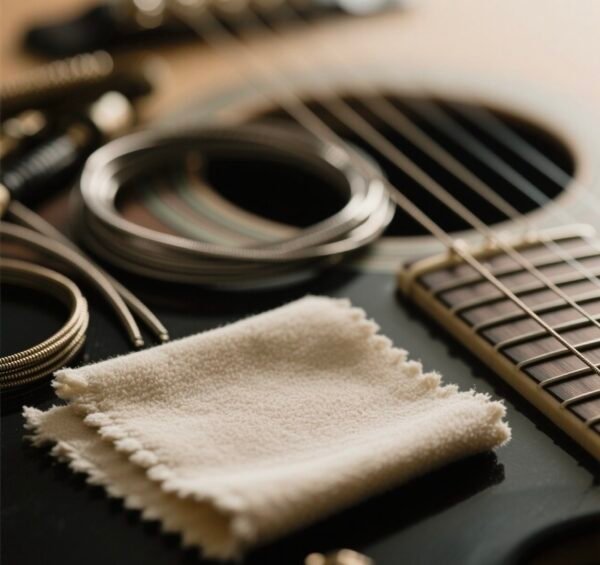Introduction
While musical instruments themselves are central to performance, accessories play an equally critical role in enabling sound quality, ease of play, and instrument care. From strings and reeds to straps, mouthpiece covers, cleaning cloths, and cases, these items are in frequent contact with performers’ hands, faces, and breath.
However, microbial contamination of instrument accessories remains an often-overlooked threat. Integrating antimicrobial agents into accessory materials enhances hygiene, prolongs product life, and safeguards both player health and brand reputation.
Why Instrument Accessories Harbor Microbes
✅ Direct Skin and Breath Contact
Accessories like mouthpiece covers, reed cases, and cleaning swabs repeatedly contact moist surfaces, providing optimal conditions for bacteria and fungi.
✅ High Usage Frequency
Straps, picks, and cloths are used daily and infrequently cleaned, accumulating sweat, oils, and microbial colonies.
✅ Storage in Warm, Enclosed Spaces
Accessories are often stored within instrument cases, creating humid micro-environments that facilitate microbial growth.
Common Microbial Risks in Instrument Accessories
| Accessory Type | Microbial Threats | Potential Impact |
|---|---|---|
| Mouthpiece covers, reeds | Candida, Streptococcus, mold | Oral thrush, respiratory infections |
| Straps (guitar, saxophone) | Skin flora bacteria, fungi | Skin irritation, dermatitis, odor |
| Cleaning cloths, swabs | Bacteria, mold | Spreading contamination to instruments |
| Cases and liners | Mold, bacteria | Odor, material degradation, allergen exposure |
Antimicrobial Agents: Mechanisms and Accessory Applications
Silver-Based Agents
- Mechanism: Silver ions disrupt microbial cell walls and interfere with DNA replication.
- Applications: Nylon or polyester straps, microfiber cloths, plastic mouthpiece covers, case liners.
- Advantages: Broad-spectrum, durable, minimal impact on material aesthetics or texture.
Zinc-Based Agents
- Mechanism: Inhibits microbial enzyme activity, halting growth.
- Applications: Foam pads, synthetic leather straps, rubber parts.
- Advantages: Mild, cost-effective, ideal for accessories with frequent skin contact.
Copper-Based Agents
- Mechanism: Generates reactive oxygen species that damage microbial proteins and genetic material.
- Applications: Metal picks, strings (coatings), brass accessories.
- Advantages: Strong antifungal and antibacterial properties, particularly useful in humid environments where mold risk is high.
Manufacturing Integration and Material Considerations
- Polymer Masterbatch Integration
Silver or zinc-based agents are blended into synthetic fibers used in straps, cloths, and mouthpiece covers to ensure uniform antimicrobial performance.
- Metal Alloy Formulation
Copper can be integrated into string coatings or metal accessories, providing inherent antimicrobial properties while preserving tonal characteristics.
- Surface Treatment (Limited Use)
While antimicrobial coatings offer initial protection, embedded solutions within material matrices provide longer-lasting efficacy, resisting abrasion and washing.
Safety and Regulatory Compliance
✅ ISO 22196 / JIS Z 2801 Testing
Verifies antimicrobial activity on treated polymer or metal surfaces.
✅ Cytotoxicity and Skin Sensitization Tests
Ensures materials are safe for prolonged skin or oral contact, critical for mouthpiece covers, reeds, and straps.
✅ Regional Regulatory Guidelines
Compliance with REACH (EU), EPA (USA), and local standards is necessary to market antimicrobial claims responsibly and legally.
Benefits for Players, Institutions, and Brands
✅ Enhanced Player Health and Safety
Reduces microbial transmission risks, protecting against infections, irritations, and allergic reactions.
✅ Extended Accessory Lifespan
Prevents odor development, material degradation, and staining caused by microbial growth.
✅ Improved Instrument Hygiene
Accessories act as interfaces between users and instruments; antimicrobial protection minimizes contamination transfer, preserving instrument condition.
✅ Market Differentiation and Premium Positioning
Brands offering antimicrobial-integrated accessories stand out as health-conscious and scientifically advanced, enhancing appeal to professionals, schools, and parents buying for student musicians.
Challenges to Navigate
💰 Cost Implications
Increases manufacturing costs by 5–15% depending on agent type and accessory design, requiring strategic pricing or premium branding approaches.
🛠 Material Performance Maintenance
Formulations must not alter accessory softness, flexibility, tonal response (for picks or strings), or aesthetic finishes.
📜 Transparent Marketing Claims
Brands should focus on proven antimicrobial benefits without implying sterility or medical-grade protection unless substantiated by comprehensive testing.
Future Opportunities in Instrument Accessory Innovation
🎶 Nano-Enhanced Antimicrobials
Nano-silver and zinc oxide nanoparticles deliver higher antimicrobial efficacy with minimal material modification, ideal for microfiber cloths and synthetic reeds.
🌱 Sustainable Antimicrobial Accessories
Combining antimicrobial agents with recycled or biodegradable materials aligns with environmental priorities in the music industry.
🧠 Smart Antimicrobial Technologies
Emerging materials activate antimicrobial properties in response to moisture or pH changes, targeting high-risk contamination moments such as post-performance storage.
Conclusion
Instrument accessories are more than simple add-ons; they are essential components of a musician’s toolkit. Incorporating antimicrobial agents into accessory materials enhances hygiene, safeguards health, and extends product life, while positioning brands as leaders in innovation and player care.
✉️ Partner With Us
We develop tailored silver, zinc, and copper-based antimicrobial solutions optimized for musical instrument accessories. Contact us to integrate durable, effective hygiene protection into your product lines and build consumer trust in every detail.


-300x210.jpg)
